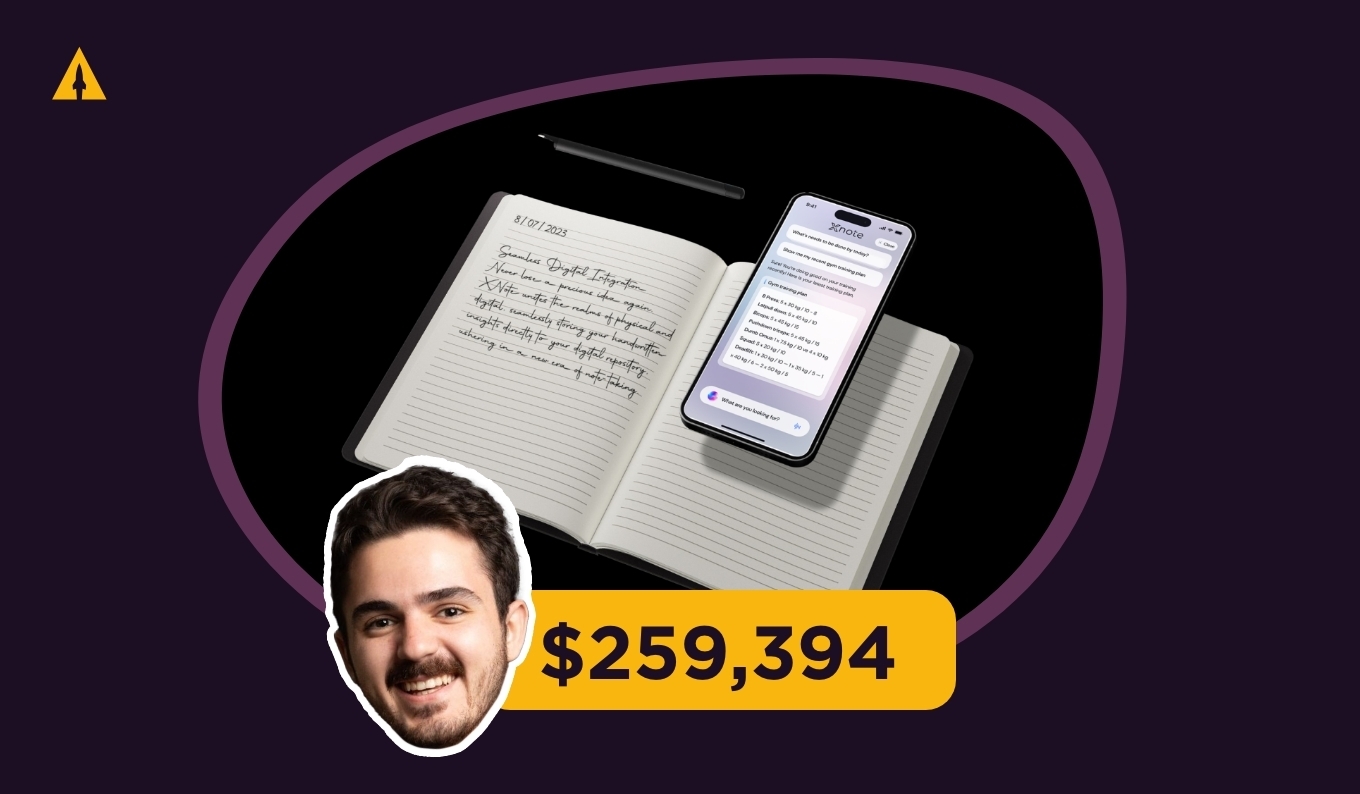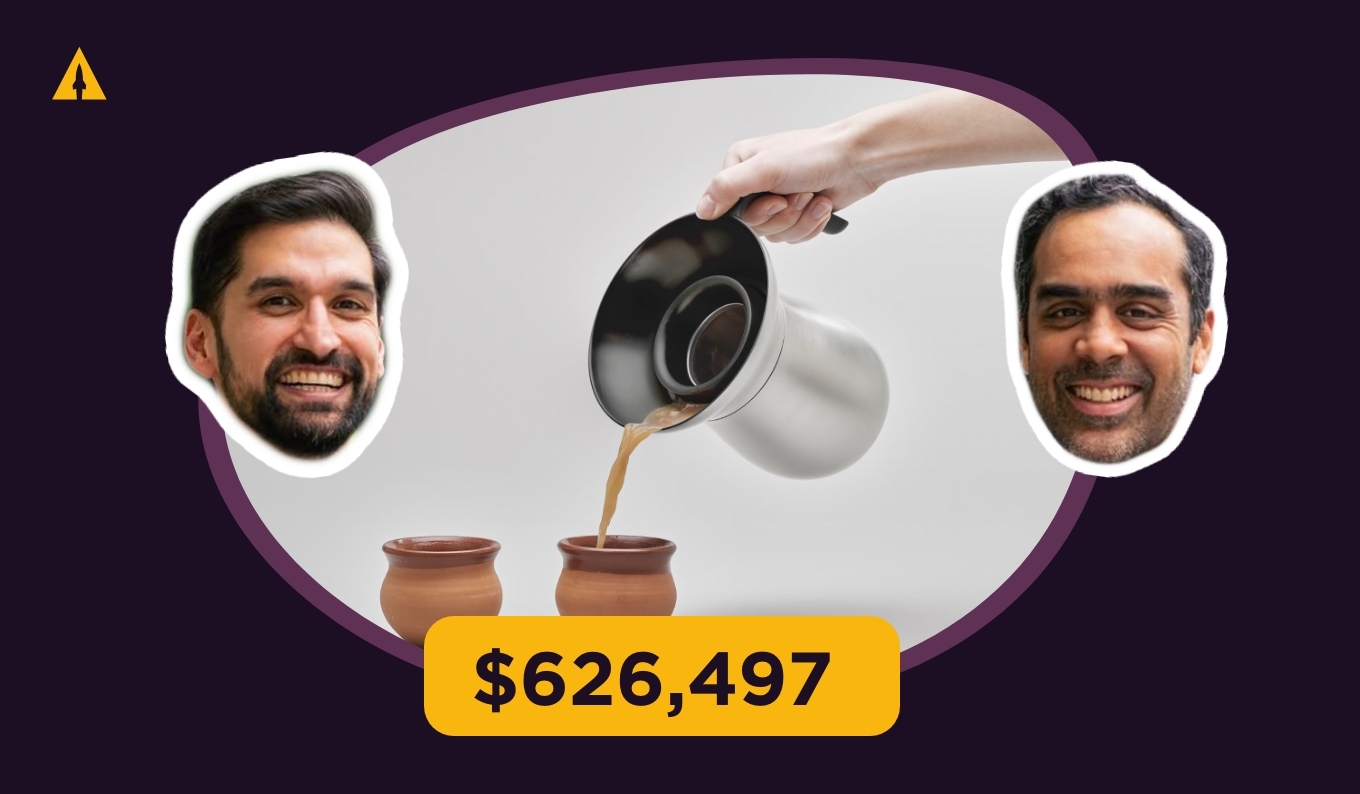
The cold plunge market is exploding.
But most solutions? They’re all the same. And if you live in an apartment like Keegan O’Connor did, you’re basically out of luck.
That frustration led Keegan to launch Chillshark – a product that turns any bathtub into a cold plunge. With the help of my team, his Kickstarter campaign raised nearly half a million dollars. I sat down with him on our Masters of Episodes podcast and he shares how.
Let’s dive in.
Contents
- The Problem That Sparked The Idea
- From Serial Entrepreneur to Cold Plunge Innovator
- The LaunchBoom Pre-Launch Strategy
- Simple But Powerful Customer Research
- Unexpected Market Insights from Real Conversations
- Marketing Investment Breakdown
- One Final Tip: Validating Your Idea Before You Build
- Your Next Hardware Launch Starts with the Right Strategy
The Problem That Sparked The Idea
Keegan had a simple problem: he wanted to cold plunge from his apartment.
So he spent a couple thousand bucks on existing products, but none of them worked.
“I called my co-founder Brandon, I was like, I think we have an idea. I think we have a problem to solve. And that was what kind of started it all.”
But this wasn’t just about one frustrated customer. When Keegan looked at the cold plunge market, he saw a massive gap. Companies like Plunge and Ice Barrel had built businesses around selling tubs. And their chillers were designed to only fit their specific tubs.
The few “universal” chillers on the market? They were all using the same overseas compressor manufacturers and they had tons of problems.
To put it simply… most companies weren’t treating chillers as their core business. So Chillshark did.

From Serial Entrepreneur to Cold Plunge Innovator
This wasn’t Keegan’s first business.
At age 15 he started a landscaping business that grew to six employees. After college, he tried Wall Street for a year and a half. “People only cared about money. I care about it, but it’s not the driving force behind why I make decisions.”
So he left. Started drop shipping companies. Built a gardening tools company. Launched Show Your Slabs – a product for displaying sports cards. Then ZapCat in the avalanche control industry.
Each venture taught him something crucial: what he wasn’t good at.
“Going through the different iterations of businesses since I was 15, it really allowed me to understand what I’m not good at and get the people in the door who can really offset what I do well and what I don’t do so well.”
When ZapCat stalled out due to economic conditions, Keegan began looking for his next opportunity.
The LaunchBoom Pre-Launch Strategy
Keegan discovered LaunchBoom through a friend who’d run a successful half-million-dollar campaign.
“He’s like, look, you got to use LaunchBoom. You got to use Kickstarter, and then just listen to everything they say and just follow it. And that’s basically what I did.”
The strategy? A reservation funnel.
“A Kickstarter success isn’t like you just pop up a campaign and then you get hundreds of thousands of dollars. At least that’s not how it was for me. You have to execute on a strategy.”
Here’s how it works: Instead of just collecting emails, you ask prospects for a $1 reservation. In exchange, they get a significant discount when the campaign launches.
The results speak for themselves. A typical email list converts at 1-3%. But with a reservation funnel? “With a reservation funnel, the data clearly states that that’s going to improve significantly to upwards of 35%, 40%.”
Chillshark ran their reservation funnel for six months before launching. And when they launched, they raised $193,191 in one day.

Simple But Powerful Customer Research
Here’s where Chillshark did something I’ve never seen in 1,000+ campaigns we’ve worked with at LaunchBoom.
They called their leads. Not to sell. To help.
“The reason why a business exists is to help people solve problems. And if we’re not helping people, why are we even existing?”
When someone gave Chillshark their information – and especially when they put down a dollar reservation – the team would call them. Not to push a sale, but to make sure the product was actually a good fit.
“Can we just make sure that this actually makes sense for you because you’re about to make a $2,400, $3,000 purchase. Don’t waste your time.”
Sometimes they’d recommend competitors. Sometimes they’d suggest the customer wait. The goal was genuine help, not conversion at any cost.
And it worked.
They not only built up a lot of goodwill with potential customers, but they gathered lots of first-hand market research.
Unexpected Market Insights from Real Conversations
Those customer calls revealed opportunities Keegan never would have considered.
The most unexpected one had to do with horses. Yes, you read that right.
“He goes, have you ever considered making something for horses? I’m like, what? Horses? Explain that.”
Turns out, racehorse owners spend hundreds of thousands on wellness treatments. Red light therapy, infrared, whatever gives their horses an edge. Cold plunging for horses? Why not?
“They’re like, if you could just have something that would turn the horse trough into something? I’m like, yeah, I could. He’s like, that would be perfect.”
This insight didn’t change Chillshark’s core strategy. But it highlighted something crucial: the universal fit of their product. Horse troughs, luxury bathtubs, even trash cans – the product could work with anything.
“We didn’t realize how important that was until having these conversations.”
That insight became a major selling point on their Kickstarter page.
Marketing Investment Breakdown
By far, the biggest cost of marketing was ad spend:
- Pre-launch ad spend: ~$50,000
- Live campaign costs: $20,000-$25,000
The other biggest cost categories were:
- High-quality video production and assets (“we really want a luxury premium feel”)
- Marketing consultants & live ad agencies
With nearly $439K+ in sales and big deals being lined up post-Kickstarter, he felt that the costs were well worth it.
One Final Tip: Validating Your Idea Before You Build
Want to know if your product idea is actually good? Use Keegan’s “friend’s idea” technique.
“You go out and you share the idea as if it was your buddy’s idea. So for example, what I did when I started Chillshark was I’d walk up to people and be like, hey, my buddy’s launching this company. They’re turning a bathtub into a cold plunge. What do you think of that?”
Why this works: People won’t lie to protect your buddy’s feelings the way they might protect yours.
“I’d be hoping they’d say something wrong or they say that’s a terrible idea. But everyone just kept going on and on about how they loved it.”
This validation technique costs nothing. But it can save you thousands in development costs on a product nobody wants.
Your Next Hardware Launch Starts with the Right Strategy
Chillshark’s success came from solving a real problem with a proven strategy.
They identified a genuine gap in the cold plunge market. Built the right team with complementary skills. And used LaunchBoom’s pre-launch strategy to build a qualified audience.
The result? A $439K Kickstarter campaign that proved high-priced hardware can succeed when you focus on genuine customer value.

But here’s what really set Chillshark apart: they treated every prospect like a person, not a conversion metric. They called to help, not just to sell. They recommended competitors when it made sense. They built relationships instead of just funnels.
That approach doesn’t just work for cold plunge products. It works for any hardware product solving a real problem.
Ready to Turn Your Product Idea into a Kickstarter Success Story?
Chillshark’s results aren’t unique.
Our approach has generated $175M+ in crowdfunding revenue across every product category. From high-end hardware like Chillshark to consumer products, we know what works.
Click here to chat with my team and get started.
We’ll discuss your product and walk through a plan to help you launch it.






